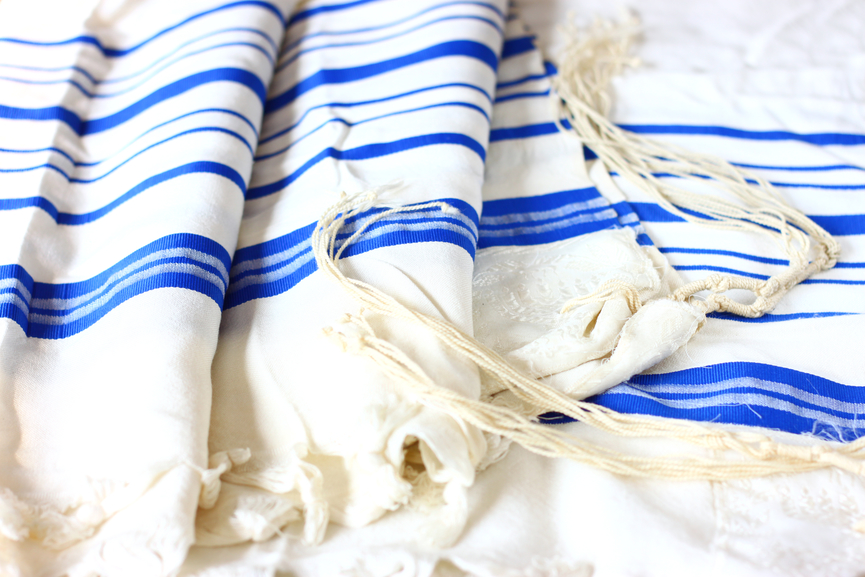Buying a Prayer Shawl for Your Quiet Time

The prayer shawl (or tallit) signifies the commandments of the Torah. The fringes that hang from the four corners consist of twists and knots that have the numerical value 613. The ancient rabbis understood that to be the total number of positive and negative commandments in Hebrew Scriptures. By wearing the tallit, the man—or woman—is surrounded by the fringes on each of the four sides, reminding them of the requirements for ethical and ritual behavior.
Significance
The source for the prayer shawl is Numbers 15:38-39. "Speak unto the children of Israel, and bid them that they make them fringes in the borders of their garments throughout their generations, and that they put upon the fringe of the borders a ribband of blue. And it shall be unto you for a fringe, that ye may look upon it, and remember all the commandments of the Lord, and do them and that ye seek not after your own heart and your own eyes, after which ye use to go a whoring." This King James translation, while maybe a bit pretentious for today, is, in fact, close to the original. The fringes serve as a reminder and a restraint against illicit behavior.
The Fringe
The fringes consist of four long threads that are looped though a hole in the corner of the garment. One thread was originally dyed a shade of blue. Since the source for that particular color ("tekhelet") was lost in the medieval period, most of today's shawls only have white fringe. The color of the thread serves as a reminder of the color of the sea, which is a reminder of the color of the sky, which is a reference to the Kingdom of Heaven. The embroidery found on prayer shawls is a form of personalization. It can be done in gold, silver, navy, or other preferred colors and can be sewn at the corner or across the middle to add to its uniqueness.
Types and Sizes
The tallit comes in two varieties: the prayer shawl proper and the small version, which resembles a poncho. Traditionally, it hangs to the back of the knees when the individual is standing. Medium-sized prayer shawls only cover the back and shoulders. The smallest size drapes around the neck and hangs down the front of the body. Unfortunately it doesn't cover enough of the body to be acceptable under Orthodox Jewish law. Traditionally, women were not required to wear a prayer shawl but it has become more common in recent years. Shawls range from silk scarf-sized to full-bodied wool ones.
Classic style prayer shawls are machine made of wool or a blend of materials. Designer shawls come in wool, silk or Chiffon. Manufacturing prayer shawls is a spiritual practice. They are passed on hand-to-hand and heart-to-heart.
Other Uses for Prayer Shawls
Jewish weddings are sometimes performed under a prayer shawl held up during the ceremony by four poles called a chupa or huppah. A man also can be buried in his tallit, which is wrapped over the shroud. In addition, it can be used to protect the scrolls of the Torah when they are moved.
Prayer Shawl Ministry
Other religious groups have adopted the idea of prayer shawls, including the Prayer Shawl Ministry, which is a network of women who knit shawls to provide comfort to those going through difficult times. They infuse the shawl with blessings during the knitting process.
Christian Usage
Some Christians pray with a tallit—found in online Christian shops and embroidered with Christian symbols rather than Jewish ones—to follow in Jesus' footsteps.
The online Jesus Boat Shop, JesusBoat.com, offers the same prodigious products, service and experience as the one in Israel. So when you buy Judaica products online from JesusBoat.com you know you are getting something special to facilitate your spiritual walk.

